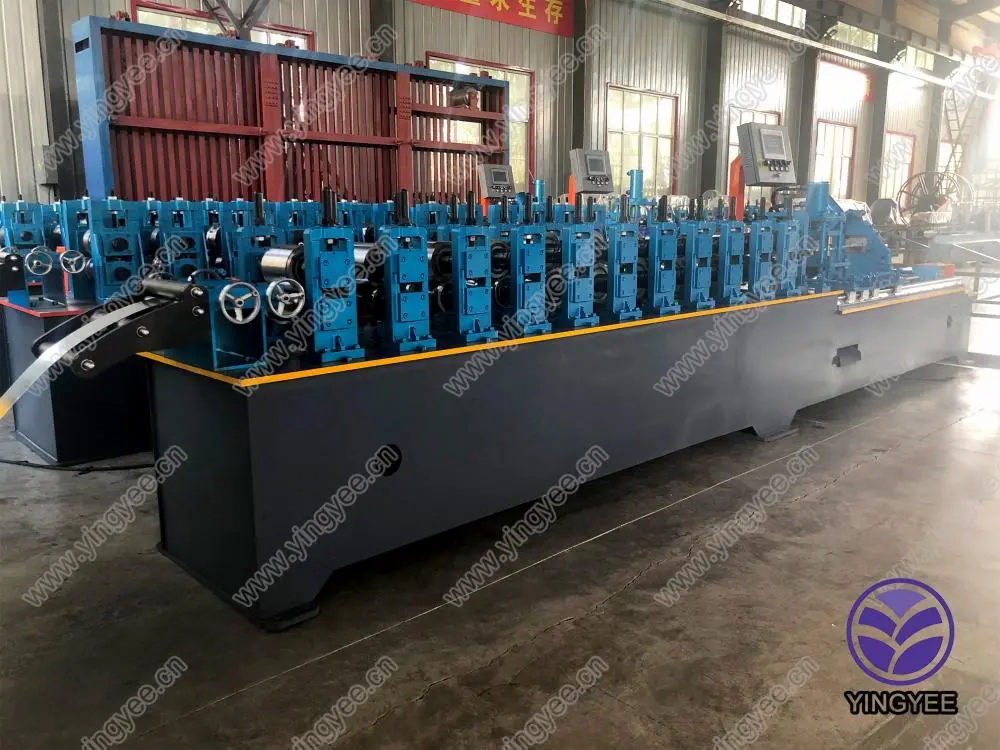
Introduction to Perforated Cable Tray Cold Roll Forming Machines
In today's rapidly evolving electrical and telecommunications sectors, the efficient management of cable systems is vital. One essential solution that has gained prominence is the perforated cable tray, which provides a safe and organized way to route and support electrical cabling. The production of these trays largely relies on cold roll forming technology, which is both efficient and cost-effective. This article explores the features, benefits, and operational aspects of perforated cable tray cold roll forming machines.
What is a Perforated Cable Tray?
A perforated cable tray is a support system used to manage, organize, and protect electrical or telecommunications cables. The perforations allow for superior ventilation, enabling heat dissipation which is crucial for preventing cable overheating. Additionally, these trays facilitate easy access for maintenance and inspection, making them a preferred choice in commercial and industrial settings.
The Role of Cold Roll Forming Machines
Cold roll forming is a manufacturing process that involves shaping metal strips into specific profiles without the need for heating. This method offers significant advantages, such as high precision, minimal material waste, and the ability to produce complex shapes with uniformity. In the production of perforated cable trays, cold roll forming machines play a pivotal role, allowing manufacturers to create trays that meet specific functionality and load-bearing requirements.
Features of Perforated Cable Tray Cold Roll Forming Machines
1. Adjustable Design Parameters One of the key features of these machines is their ability to adjust to different tray sizes and perforation patterns. This versatility enables manufacturers to cater to a wide range of customer needs.
2. High Production Efficiency Cold roll forming machines are designed for high-speed operation, capable of producing large volumes of trays in a relatively short timeframe. This efficiency helps companies meet high-demand scenarios without compromising quality.
3. Integrated Perforation Options Modern machines often come equipped with integrated perforation mechanisms. This allows for the simultaneous formation of trays and perforation, significantly reducing production time and labor costs.

4. Durable Construction These machines are typically built from high-quality materials to withstand continuous operation. Durability ensures a longer lifespan and lower maintenance costs for manufacturers.
5. User-Friendly Operation With advancements in technology, many machines now feature digital interfaces and automatic settings, making them easier to operate. This reduces the need for extensive training and helps streamline production processes.
Benefits of Using Cold Roll Forming Machines
1. Cost-Effective Production The precision of cold roll forming minimizes material waste and reduces production costs. Manufacturers can achieve high profit margins while maintaining competitive pricing.
2. Enhanced Product Quality The cold roll forming process results in consistent and high-quality products with excellent mechanical properties. Perforated cable trays produced through this method are robust and reliable.
3. Eco-Friendly Manufacturing Compared to other production methods, cold roll forming has a lower environmental impact. The process generates less waste and requires less energy, aligning with modern sustainable manufacturing practices.
4. Customization Abilities With adjustable settings, manufacturers can easily create customized products that meet specific client requirements, contributing to higher customer satisfaction.
Conclusion
The demand for perforated cable trays is on the rise due to their functionality and effectiveness in cable management. As such, perforated cable tray cold roll forming machines have become essential in the manufacturing process, allowing producers to leverage efficiency and customization at a reduced cost. Going forward, advancements in technology are likely to enhance the capabilities of these machines, further improving production efficiency and product quality. Manufacturers who adopt these technologies will be well-positioned to thrive in an increasingly competitive marketplace.